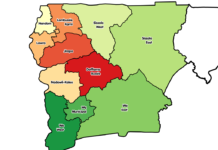
In the rich tapestry of ecclesiastical history, few figures captivate the imagination as deeply as Pope Joan, the legendary woman said to have ascended the papal throne disguised as a man.
Her story, enveloped in mystery, theological tension, and cultural significance, continues to provoke scholarly debate and inspire artistic retellings.
While there is no conclusive historical proof of her existence, the legend of Pope Joan has served as a compelling narrative of intelligence, ambition, and ultimate tragedy—one that challenges the gender norms of medieval society and the sanctity of religious hierarchy.
Name: Pope Joan (alleged reign circa 855–857 CE)
Also known as: Johanna Angelica (various legends)
Status: Legendary; Historicity debated
Early Life and Rise to Power
According to the most enduring versions of the tale, Joan was born in Mainz (modern-day Germany) or possibly England, in the early 9th century. She was a gifted scholar from a young age, excelling in Latin, Greek, philosophy, and theology—subjects largely inaccessible to women of her time.
Disguised as a man under the name Johannes Anglicus, she entered a monastic school and later moved to Rome. Her intellect and piety earned her the admiration of clergy and laity alike. Rising rapidly through the ecclesiastical ranks, she allegedly became cardinal and, following the death of Pope Leo IV, was elected pope by unanimous acclaim, unaware of her true gender.
Pontificate and Achievements
As pope, Joan was reputedly wise, diplomatic, and reformative. Though no verifiable papal bulls or decrees can be attributed to her, legend holds that her tenure was marked by intellectual vigor and pastoral care. She was said to have promoted education, curbed clerical corruption, and upheld justice—traits that deepened her popularity among the faithful.
Her papacy, though brief, was considered by her supporters as an era of enlightenment and inclusivity, particularly notable in a time when both church and state were staunchly patriarchal.
The Fall and Death
The legend takes a tragic turn when Pope Joan, allegedly pregnant by a trusted companion, gave birth during a papal procession near the Lateran in Rome. The crowd, stunned and enraged by the deception, either murdered her on the spot or banished her to a remote convent, where she soon died.
Accounts differ: some claim she died in childbirth; others state she was executed or died in penance. In all versions, her death marked a swift and silent erasure from official Vatican records—if, indeed, she ever existed in them.
Was She Truly a Woman?
The question of Pope Joan’s gender is central to her story—and to the controversy it evokes. By all legendary accounts, she was biologically female and successfully passed as a man for many years. Some chroniclers suggest her pregnancy was the only revelation of her sex, while others dispute her existence altogether.
Modern historians largely regard the tale as myth, likely originating from anti-papal satire or misunderstood folklore. However, the persistence of her legend and the symbolism it carries underscore enduring questions about gender, authority, and historical silence.
Legacy
Regardless of historical veracity, Pope Joan has become a potent cultural symbol. She represents a challenge to institutional exclusion and a celebration of intellectual resilience. Her story, whether fact or fable, continues to inspire books, plays, films, and academic discourse, revealing society’s enduring fascination with hidden truths and the power of courage in the face of impossible odds.
Disclaimer: The story of Pope Joan is considered apocryphal by the Catholic Church and most professional historians. This biography is a literary and cultural interpretation, not a verified historical account.

















































![Morocco knock out Spain on 3-0 penalties to reach FIFA World Cup 2022 quarter-final, Morocco vs Spain (0-0) (3-0) [Video]. Morocco knock out Spain on 3-0 penalties](https://ghanaregions.com/wp-content/uploads/2022/12/Watch-Morocco-vs-Spain-0-0-and-3-0-penalties-218x150.jpg)



































